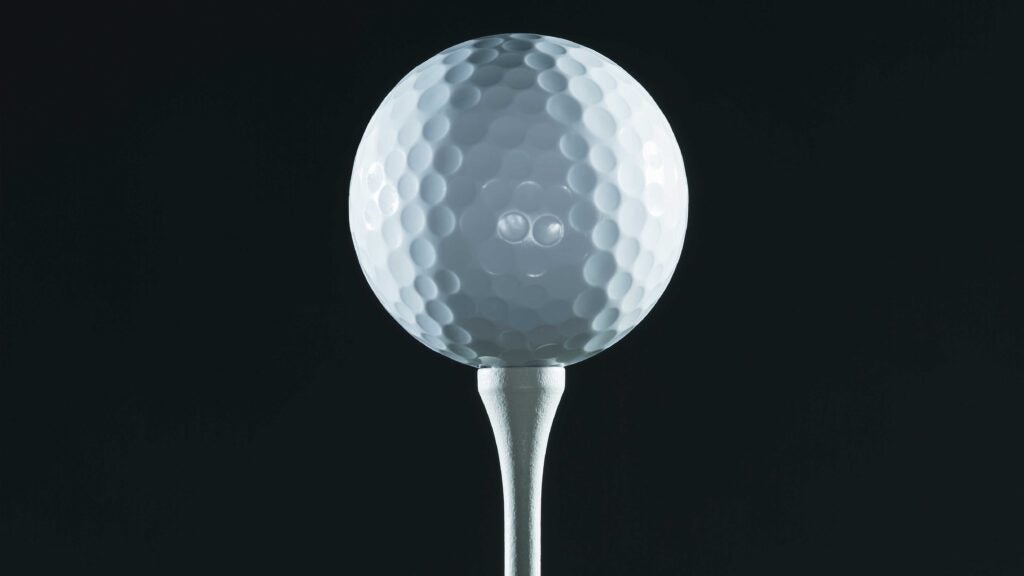Welcome to Gear Questions You’re Afraid to Ask, a GOLF.com series produced in partnership with Cleveland/Srixon Golf. This week we cover making the switch from a value golf ball to a premium one.
I’m a new golfer and a bit confused. If premium balls are for better players, then how do I become a better player if my golf pro keeps telling me to play a value ball? — Stephanie N., Arizona
Ahh, you’ve stumbled upon one of golf’s most challenging questions. It’s not just about golf balls; the same can be said for practically any equipment with designated tiers of performance. When it comes to golf ball performance, we’ve got some truth for you below.
Before we delve deeper, let’s first understand what makes a golf ball either a value ball or a high-performance/premium golf ball. Value-driven golf balls are typically made for higher handicappers who want maximum distance, straighter shots, and a soft feel. These balls usually come in two- or three-piece combinations, with durable ionomer or Surlyn covers. They’re often designed to help slower swings get more lift off the tee. Srixon’s Soft Feel, which is a two-piece ball with a multi-density core, is a good example of a ball in this category. Lastly, value golf balls usually cost under $25 per dozen.
High-performance golf balls (or premium balls, for brevity’s sake) are generally made for better players who want specialized levels of performance, either off the tee or with irons/wedges, or in some cases, both.
Premium golf balls cater to different trajectories and feels, and are usually multilayer golf balls, often made of three, four, or sometimes five layers. They also usually have soft urethane covers for maximum grip with shorter shots. Srixon’s Z-Star line is a good example of a premium ball — it contains various models that cater to the varying demands of different better player types. Balls in this category usually cost $40 and up per dozen.
Srixon Q-Star Tour Divide
Armed with that knowledge, here’s your answer as to why your coach has you sticking with a value ball. And get ready, because it’s a two-parter:
Speed is what matters most off the tee
To extol the benefits of a premium golf ball off the tee, which for many means hitting the ball as far as possible with moderate/controllable spin rates, skill certainly plays a role. You want to hit the ball with the optimal clubface angle and path to achieve maximum distance and accuracy. But skill is not the most important thing; speed is.
You need a clubhead speed of at least 100 mph or greater to compress the ball through the cover to take advantage of the mid-layer/multi-density core found in modern-day premium golf balls. Without speed, you won’t maximize the performance of a premium golf ball off the tee (with a driver.) And if you have an average to slow swing speed, playing a high-performance golf ball won’t benefit you off the tee, and in some cases, using one might lessen your ability to tack on a few extra yards.
Short-game spin required better technique
We’ve covered this before, but it bears repeating: to generate maximum spin around the green, it takes proper technique to impact maximum spin loft through impact. Spin loft is essentially the difference in clubhead path and clubhead face angle at impact. The greater this disparity, the more spin you’ll generate. Using a premium golf ball with a soft cover will help better players with good technique spin the ball way more than they’d get with a value ball with a firm cover.
The same could be said of a player with less-than-perfect technique – to a certain point. Using a premium ball isn’t a guarantee that you’ll stick your chips and pitch shots like a pro, but it might help you spin the ball a tad more to improve your accuracy.
Srixon Q-Star Tour
The question is, if you’re still in the development phase, is giving up the added distance you’ll likely get with a value ball off the tee worth the few extra rpms you might get with your short irons and wedges? Based on what you said about your coach, seems like you’re not quite there yet and probably better off using a value ball until your speed increases and you sharpen your short game technique.
When you begin to improve, keep in mind that there is an intermediate category of golf balls that blend features of both value and premium balls. These multi-layer balls often have urethane covers and offer longer tee shots and improved spin around the green. Srixon’s Q-STAR Tour is an excellent example of this type of ball. Even better, they typically cost less than $35 per dozen.
It’s important to remember to start slowly and gradually work your way up to a better ball as your skills develop. If you see significant improvement after a few months, then consider making the switch to a higher-performing ball.
Want to overhaul your bag for 2023? Find a fitting location near you at GOLF’s affiliate company True Spec Golf. For more on the latest gear news and information, check out our latest Fully Equipped podcast below!
